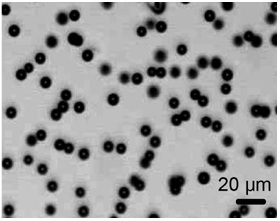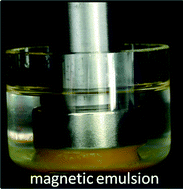This month sees the following articles in Soft Matter that are in the top ten most accessed for May:
Design of patchy particles using ternary self-assembled monolayers
Inés C. Pons-Siepermann and Sharon C. Glotzer
Soft Matter, 2012, 8, 6226-6231
DOI: 10.1039/C2SM00014H
Mechanics of morphological instabilities and surface wrinkling in soft materials: a review
Bo Li, Yan-Ping Cao, Xi-Qiao Feng and Huajian Gao
Soft Matter, 2012, 8, 5728-5745
DOI: 10.1039/C2SM00011C
Self-assembled hierarchical structure evolution of azobenzene-containing linear-dendritic liquid crystalline block copolymers
Zehua Shi, Dongzhong Chen, Huanjun Lu, Bin Wu, Jie Ma, Rongshi Cheng, Jianglin Fang and Xiaofang Chen
Soft Matter, 2012, 8, 6174-6184
DOI: 10.1039/C2SM07249A
Tunable plasmonic nanostructures from noble metal nanoparticles and stimuli-responsive polymers
Ihor Tokarev and Sergiy Minko
Soft Matter, 2012, 8, 5980-5987
DOI: 10.1039/C2SM25069A
Self-assembly of biodegradable polyurethanes for controlled delivery applications
Mingming Ding, Jiehua Li, Hong Tan and Qiang Fu
Soft Matter, 2012, 8, 5414-5428
DOI: 10.1039/C2SM07402H
Thermoresponsive supramolecular dendronized copolymers with tunable phase transition temperatures
Jiatao Yan, Xiaoqian Zhang, Wen Li, Xiuqiang Zhang, Kun Liu, Peiyi Wu and Afang Zhang
Soft Matter, 2012, 8, 6371-6377
DOI: 10.1039/C2SM25285F
Dual pH-triggered physical gels prepared from mixed dispersions of oppositely charged pH-responsive microgels
James McParlane, Damien Dupin, Jennifer M. Saunders, Sarah Lally, Steven P. Armes and Brian R. Saunders
Soft Matter, 2012, 8, 6239-6247
DOI: 10.1039/C2SM25581B
Design and properties of supramolecular polymer gels
Atsushi Noro, Mikihiro Hayashi and Yushu Matsushita
Soft Matter, 2012, 8, 2416-2429
DOI: 10.1039/C2SM25144B
Membrane properties of swollen vesicles: growth, rupture, and fusion
Chun-Min Lin, David T. Wu, Heng-Kwong Tsao and Yu-Jane Sheng
Soft Matter, 2012, 8, 6139-6150
DOI: 10.1039/C2SM25518A
Non-affine deformations in polymer hydrogels
Qi Wen, Anindita Basu, Paul A. Janmey and Arjun G. Yodh
Soft Matter, 2012, Advance Article
DOI: 10.1039/C2SM25364J
Why not take a look at the articles today and blog your thoughts and comments below.
Fancy submitting an article to Soft Matter? Then why not submit to us today!
To keep up-to-date with all the latest research, sign up for the Soft Matter e-Alert or RSS feeds or follow Soft Matter on Twitter or Facebook.
 A Soft Matter paper has been highlighted on the science news website Science Daily. In the Soft Matter paper (Designing maneuverable micro-swimmers actuated by responsive gel) Alexander Alexeev and co-workers at Georgia Institute of Technology, USA, design a simple maneuverable micro-swimmer that can self-propel and navigate in microfluidic channels. The micro-swimmer is designed using computational modelling.
A Soft Matter paper has been highlighted on the science news website Science Daily. In the Soft Matter paper (Designing maneuverable micro-swimmers actuated by responsive gel) Alexander Alexeev and co-workers at Georgia Institute of Technology, USA, design a simple maneuverable micro-swimmer that can self-propel and navigate in microfluidic channels. The micro-swimmer is designed using computational modelling.















